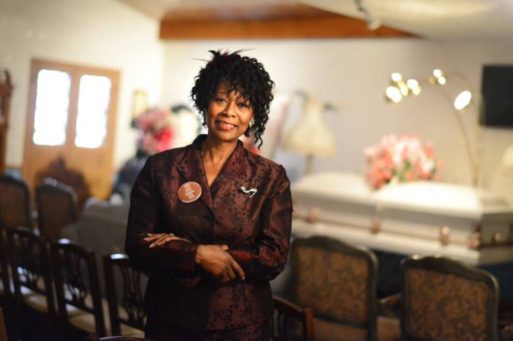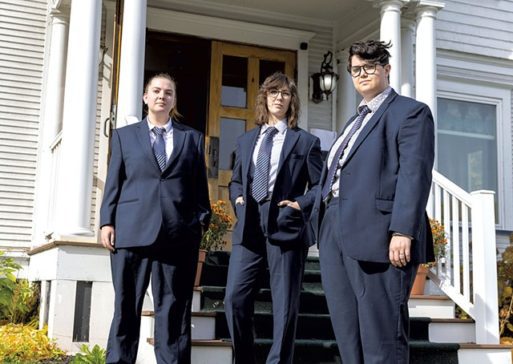
Madonna, owner of the Madonna Multinational Home for Funerals in Baltimore, represents the changing face of the funeral service industry.
Credit: Carmine Galasso via AAIHS
When people think of morticians, an image of an older, doleful man dressed in black, possibly hiding some secrets or scams, might come to mind. But the face of the funeral service industry is rapidly changing, as many older morticians and funeral directors retire. The funeral worker industry is currently facing a shortage, which may only grow worse in coming years. Randy Anderson, president of the National Funeral Directors Association, told CNN, “There’s an urgent need to replace those who have been in the profession for many years and are retiring. Over 60% of funeral home owners said they will retire in five years.” The average age of a funeral worker in the U.S. is 48.7, compared to a nationwide average of 42.3. And only 22% of workers are under age 35, in contrast to 35% of all employed people.
Fortunately, enrollment in mortuary schools has jumped since the COVID-19 pandemic, as new student enrollment increased 24% between 2020 and 2021. Additionally, many of these new students tend to be younger women. In 2022, 79% of the students enrolled in mortuary schools were women, versus 35% of female students in 1995. The industry has seen a huge boom in interest from women, especially as many states have made paths to licensure easier. Many schools, such as Worsham College of Mortuary Science in Wheeling, Illinois, one of the nation’s oldest mortuary schools founded in 1911, report that the average student is now a 24- to 29-year-old woman. Many of these younger female funeral workers are being creative about thinking through what funerals and death care can look like, and are innovating. As home funerals grow more popular, they are often planned by younger women. The current board of directors at the National Home Funeral Alliance reflects that trend.

Three young funeral professionals, Keagan Livingston, Rachel Currier and Em Pariseau, at LaVigne Funeral Home in Winooski, Vermont
Credit: Seven Days Vermont
Many of these new funeral workers describe themselves as called to the profession, often through a personal experience with death. Victor Sweeney, a 29-year-old funeral director in rural Minnesota, traces his comfort with being around the dying to a childhood experience discovering a friend had died. Hannah Walker, a 31-year-old funeral worker, was inspired by her grandfather’s death from cancer and subsequent funeral. Many of these individuals were drawn to helping people. Twenty-eight-year-old funeral director Keagan Livingston shared with Seven Days what draws her to this field, “I find it very rewarding to help a family go through the grieving process and to help them find closure. When a family comes up at the end of a service and tells me that everything was beautiful and they felt relieved, that makes me feel good.” While the need is great for more funeral workers, it is encouraging to see such passion among a younger cohort of workers.

 The Changing Face of the Funeral Service Industry
The Changing Face of the Funeral Service Industry


 Our Annual Seven Holiday Gifts for Someone Who Is Grieving, 2024 Edition
Our Annual Seven Holiday Gifts for Someone Who Is Grieving, 2024 Edition
 “Making Mobiles” by Karolina Merska
“Making Mobiles” by Karolina Merska
 “Hands Up to the Sky” by Michael Franti & Spearhead
“Hands Up to the Sky” by Michael Franti & Spearhead















The structure of a funeral order of service plays a vital role in bringing closure and support to the bereaved.
Report this comment